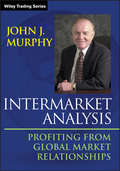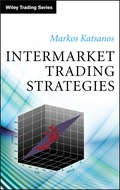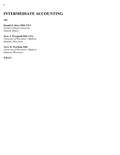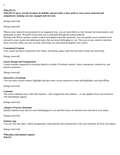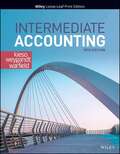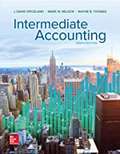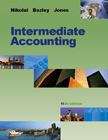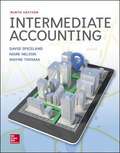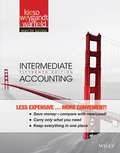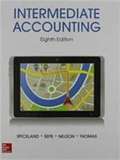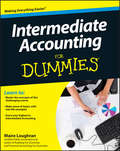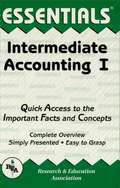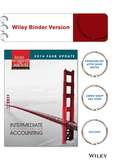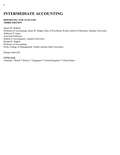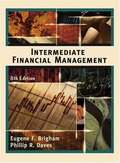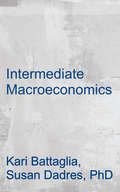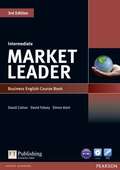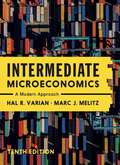- Table View
- List View
Interline Brands: Don't Stop Believing
by Nori Gerardo Lietz Ricardo AndradeInterline Brands, a leading distributor of residential housing maintenance and repair parts and equipment in the U.S., had just held its November 2014 board meeting. The meeting had been productive, but not without some soul searching for both the company's management team and financial sponsors. Was now the right time to start a sale process? In particular, the team wondered whether the capital markets would cooperate and how effectively the management and sponsor teams would execute. Moreover, the company had only been private for two years, and the value creation plan was only halfway through completion. While there was much to be done at Interline, the company had performed well and was gaining momentum. Interline was a rare asset in terms of the scale it had reached. However, there were still unknowns. Would buyers reward Interline with a high valuation multiple that reflected its acceleration in organic growth? Would financing markets remain healthy? Would such a process disrupt Interline's customers and employees?
Intermarket Analysis
by Murphy John J.Praise for INTERMARKET ANALYSIS "John Murphy has done it again. He dissects the global relationships between equities, bonds, currencies, and commodities like no one else can, and lays out an irrefutable case for intermarket analysis in plain English. This book is a must-read for all serious traders. " -Louis B. Mendelsohn, creator of VantagePoint Intermarket Analysis software "John Murphy's Intermarket Analysis should be on the desk of every trader and investor if they want to be positioned in the right markets at the right time. " -Thom Hartle, President, Market Analytics, Inc. (www. thomhartle. com) "This book is full of valuable information. As a daily practitioner of intermarket analysis, I thought I knew most aspects of this invaluable subject, but this book gave me several new ideas. I thoroughly recommend it for beginners and professionals. " -Martin Pring, President of Pring. com and editor of the Intermarket Review Newsletter "Mr. Murphy's Intermarket Analysis is truly the most efficient and unambiguous way to define economic and fundamental relationships as they unfold in the market. It cuts through all of the conflicting economic news/views expressed each day to provide a clear picture of the 'here and now' in the global marketplace. " -Dennis Hynes, Managing Director, R. W. Pressprich "Master Murphy is back with the quintessential look at intermarket analysis. The complex relationships among financial instruments have never been more important, and this book brings it all into focus. This is an essential read for all investors. " -Andrew Bekoff, Technical Strategist, VDM NYSE Specialists "John Murphy is a legend in technical analysis, and a master at explaining precisely how the major markets impact each other. This updated version provides even more lessons from the past, plus fresh insights on current market trends. " -Price Headley, BigTrends. com, author of Big Trends in Trading
Intermarket Trading Strategies
by Markos KatsanosThis book shows traders how to use Intermarket Analysis to forecast future equity, index and commodity price movements. It introduces custom indicators and Intermarket based systems using basic mathematical and statistical principles to help traders develop and design Intermarket trading systems appropriate for long term, intermediate, short term and day trading. The metastock code for all systems is included and the testing method is described thoroughly. All systems are back tested using at least 200 bars of historical data and compared using various profitability and drawdown metrics.
Intermediate Accounting
by Donald E. Kieso Terry D. Warfield Jerry J. WeygandtKieso, Weygandt, and Warfield’s Intermediate Accounting, Sixteenth Edition continues to set the standard for students and professionals in the field. The 16th edition builds on this legacy through new, innovative student-focused learning. Kieso maintains the qualities for which the text is globally recognized, including its reputation for accuracy, comprehensiveness, accessibility, and quality problem material that best prepares students for success on the CPA exam and accounting careers. The 16th edition offers the most up-to-date coverage of US GAAP & IFRS in a format suited to the complex challenges of teaching intermediate accounting in these changing times.
Intermediate Accounting
by Donald E. Kieso Terry D. Warfield Jerry J. WeygandtIntermediate Accounting, 17th Edition is written by industry thought leaders, Kieso, Weygandt, and Warfield, and is developed around one simple proposition: create great accountants. Upholding industry standards, this edition incorporates new data analytics content and up-to-date coverage of leases, revenue recognition, financial instruments, and US GAAP & IFRS. While maintaining its reputation for accuracy, comprehensiveness, and accessibility, Intermediate Accounting drives results by helping students build professional competencies through reliable problem material.
Intermediate Accounting
by Donald E. Kieso Terry D. Warfield Jerry J. WeygandtIntermediate Accounting by Donald Kieso, Jerry Weygandt, and Terry Warfield has always been, and continues to be, the gold standard. Through significant updates, the 18th Edition presents a refreshed, accessible, and modern approach with new perspectives that help connect students to the what, the why, and the how of accounting information. In the intermediate accounting course, it can be difficult for students to understand the technical details and retain and recall core course topics. To move beyond basic understanding, students work through new integrated practice right at the point of learning and high-quality assessment at varying levels, helping them to learn concepts more efficiently and create connections between topics and real-world application. Throughout the course, students also work through various hands-on activities including Critical Thinking Cases, Excel Templates, and Analytics in Action problems, all within the chapter context. These applications help students develop an accounting decision-making mindset and improve the professional judgement and communication skills needed to be successful in the profession. With Intermediate Accounting, 18th Edition, you will be able to spark efficient and effective learning, help create the bridge to student success, and inspire and prepare students to be the accounting professionals of tomorrow.
Intermediate Accounting
by J. David Spiceland Wayne B. Thomas Mark W. NelsonThe Spiceland/Nelson/Thomas author team has created the new standard in Intermediate Accounting by providing students the most accessible, comprehensive, and current Intermediate Accounting learning system. The rigorous yet readable approach has won over instructors across the country while the coherent, consistent voice of this highly dedicated, deeply engaged author team has significantly improved student understanding. The Spiceland team is committed to providing current, comprehensive, and clear coverage of Intermediate Accounting, and the tenth edition continues to leverage Connect as the premier digital teaching and learning tool on the market. Spiceland/Nelson/Thomas’s Intermediate Accounting excels in fully preparing students for the CPA exam and their future careers through the materials highly acclaimed conversational writing style, carefully tuned pedagogy, and wealth of online tools. The authors help students develop a better understanding of both theoretical and practical concepts, guiding them to a more complete mastery of accounting principles. The new tenth edition has produced the most cleanly streamlined, thoroughly market-tested, and fully integrated coverage for the latest GAAP and Accounting Standards Updates, as well as tax reforms from the 2017 Tax Cuts and Jobs Act, including: Income Taxes (ch. 16), Leases (ch. 15), Revenue recognition (ch. 5). An extensive collection of NEW and updated technology assets highlight further enhancements in this edition, such as: Tableau Data Analytics Cases, Auto-Graded Decision Makers’ Perspective cases, General Ledger Problems, Concept Overview Videos, Excel Simulations, Guided Example Hint Videos, ALEKS Accounting Cycle Review.
Intermediate Accounting 11th Edition
by Loren A. Nikolai John D. Bazley Jefferson P. JonesINTERMEDIATE ACCOUNTING, Eleventh Edition, provides the perfect combination of professional language and vibrant pedagogy to facilitate the transition from financial principles to the larger environment of financial reporting. To prepare students for professional accounting careers, the text's comprehensive coverage of GAAP and discussion of IFRS is clearly and consistently presented throughout the text. This coverage complements the authors' insight, which is in both the in-text commentary and the fully coordinated, author-written end-of-chapter material.
Intermediate Accounting (9th Edition)
by Wayne Thomas J. David Spiceland Mark W. NelsonIntermediate Accounting is quickly becoming the most popular resource in its field due to its rigorous yet readable approach to coursework and the coherent, consistent voice of the author team. The Spiceland team is committed to providing current, comprehensive, and clear coverage of intermediate accounting, and the ninth edition continues to leverage Connect as the premier digital teaching and learning tool on the market. Spiceland excels in fully preparing students for the CPA exam and their future careers through the material’s highly acclaimed conversational writing style, carefully tuned pedagogy, and wealth of online tools. Spiceland helps students develop a better understanding of both theoretical and practical concepts, guiding them to a more complete mastery of accounting principles.
Intermediate Accounting (Fifteenth Edition)
by Donald E. Kieso Terry D. Warfield Jerry J. WeygandtKieso, Weygandt and Warfield's Intermediate Accounting continues to set the standard for intermediate accounting students and professionals in the field. The Fifteenth edition builds on this legacy through new innovative student focused pedagogy in the book itself and with online support. Kieso maintains the qualities for which the text is globally recognized, including its reputation for accuracy, comprehensiveness, accessibility, and quality problem material that best prepares students for success on the CPA exam. The Fifteenth edition offers the most up to date coverage of IFRS and US GAAP in a presentational format suited to the complex challenges of teaching intermediate in these changing times. The WileyPLUS homework and learning platform (access to WileyPLUS sold separately) is better than it has ever been for Kieso, with a multitude of new assessment items, multimedia resources, and enhanced functionality to ensure students will do real accounting and get real results. There have also never been so many options for accessing content, from several online only options, premium value print and digital formats, and custom versions designed to fit your needs perfectly.
Intermediate Accounting Eighth Edition
by J. David Spiceland Wayne B. Thomas Mark W. Nelson James F. SepeFinancial accounting is undergoing a period of unprecedented change. The FASB and IASB have been working together to issue converged accounting standards that will dramatically change key reporting areas, and more generally have sought to converge accounting standards over time. However, at present the convergence process appears to have stalled with respect to new standards, and it is not clear when, if ever, IFRS will be fully incorporated into U. S. GAAP. So, while there is considerable overlap between U. S. GAAP and IFRS, important differences between U. S. GAAP and IFRS will remain for the foreseeable future. To help instructors deal with this very challenging environment, the Spiceland team is committed to providing current, comprehensive, and clear coverage of intermediate accounting, and the eighth edition reflects this.
Intermediate Accounting For Dummies
by Maire LoughranThe easy way to master an intermediate accounting courseIntermediate accounting courses are required for students seeking bachelor's degrees in accounting and often for degrees in finance, business administration, and management. Intermediate Accounting For Dummies provides you with a deeper and broader level of accounting theory, serving as an excellent course supplement and study guide to help you master the concepts of this challenging program.With easy-to-understand explanations and realworld examples, Intermediate Accounting For Dummies covers all the topics you'll encounter in an intermediate accounting course: the conceptual framework of Generally Accepted Accounting Principles (GAAP), International Financial Reporting Standards (IFRS), financial ratio analysis, equity accounting, investment strategies, financial statement preparation, and moreTracks to a typical intermediate accounting curriculumExpert information and real-world examplesOther titles from Loughran: Financial Accounting For Dummies and Auditing For DummiesWith the help of Intermediate Accounting For Dummies, you'll discover the fast and easy way to take the confusion out of the complex theories and methods associated with a typical intermediate accounting course.
Intermediate Accounting I Essentials
by Eldon BaileyREA's Essentials provide quick and easy access to critical information in a variety of different fields, ranging from the most basic to the most advanced. As its name implies, these concise, comprehensive study guides summarize the essentials of the field covered. Essentials are helpful when preparing for exams, doing homework and will remain a lasting reference source for students, teachers, and professionals. Intermediate Accounting I includes background accounting theory and practice, basic financial statements, cash, receivables, inventories, investments, and property, plant, equipment, and intangible assets.
Intermediate Accounting, 2014 FASB Update
by Donald E. Kieso Terry D. Warfield Jerry J. Weygandt Paul D. KimmelIntermediate Accounting by Kieso, Weygandt, and Warfield improves students' readiness for their intermediate accounting course, builds awareness around the CPA exam, and prepares students for their future careers with exclusive access to internship listings from across the country. Intermediate Accounting 15th Edition maintains the qualities for which the text is globally recognized, including its reputation for accuracy, comprehensiveness, accessibility, and quality problem material that best prepares students for success in their academic and professional careers. The 2014 FASB Update incorporates the recently issued standard on Revenue from Contracts with Customers in a new Revenue Recognition chapter, and helps prepare the next generation of accounting and finance students for the global economy. Students using WileyPLUS do real accounting and get real results. With automatically graded practice and homework assignments, and over two hours of video based resources per chapter, students come to class prepared for quizzes and exams. WileyPLUS also provides students with access to nearly 1,000 practice CPA exam questions powered by Wiley CPAexcel, and access to internship listings from across the country powered by AccountingFly. WileyPLUS is sold separately from this text.
Intermediate Accounting,: Volume 2
by Karen Nelson Michelle Hanlon Leslie Hodder Darren Roulstone Amie DragooWelcome to the Second Edition of Intermediate Accounting. This product is the result of extensive market research that included both faculty and students. We created this learning system because, as educators, we didn't feel that the existing textbooks in the intermediate market recognized how the study habits of today's students have evolved, nor did we feel that existing textbooks fully embraced the power of technology in the learning process. This product is not so much a textbook as it is an integrated learning system.
Intermediate Accounting: Reporting and Analysis
by Jefferson P. Jones Donald Pagach James M. WahlenToday's financial accounting is continuously changing. Now, you have a resource to help you understand the importance of accounting information and how that information is critical to others in business today with Wahlen/Jones/Pagachs INTERMEDIATE ACCOUNTING, 3E. <p><p> Positive examples and cases from familiar companies, such as Starbucks, Coca-Cola, Apple, Louis Vuitton and Nestle, reinforce the book's unique, approachable perspective. You see the power of financial accounting information for investors, creditors and other stakeholders. This edition's in-depth coverage also clearly addresses the latest accounting standards. <p><p> This edition works closely with CengageNOWv2 digital resources to help you manage the rigor and time requirements of today's intermediate accounting course. Learning tools help you master key concepts. In addition, algorithmic homework exercises allow you to solve multiple versions of exercises, in order to build confidence and expertise.
Intermediate Accounting: Volume 1
by Karen Nelson Michelle Hanlon Leslie Hodder Darren Roulstone Amie DragooThis text is uniquely designed within a system of interactive resources that are tailored to the needs of today's students. As the learning styles of students have evolved, we do not feel that the market has fully embraced the study habits of today’s students and the power of technology in the learning process. The emphasis in our approach is to provide students with a demo and a review problem on each deliberately selected, key learning objective. In this way, students practice each learning objective with the added opportunity to practice the exact demos electronically in myBusinessCourse, our online homework platform.
Intermediate Financial Management (Eighth Edition)
by Eugene F. Brigham Phillip R. Davesone designed specifically for the second financial management course, and that led to the creation of Intermediate Financial Management, or IFM for short.
Intermediate Islamic Finance
by Abbas Mirakhor Zamir Iqbal Nabil MaghrebiExplore Islamic finance at a deeper level Intermediate Islamic Finance: Theory and Practice fills the gap for students and professionals who are already familiar with the fundamentals of Islamic finance, but would like to gain an enhanced understanding of Islamic finance theories and practices. This comprehensive text provides you with coverage of global developments and describes the role of Islamic finance within the global finance community to guide you in your understanding of this important aspect of the international financial landscape. The book references advance concepts and specific problems in the practice of Islamic finance, provides suggested further readings for each chapter, offers details of advanced analysis, and presents key data in visual form via graphs, figures, and tables. Profound changes have taken place in the financial landscape over the past few decades, including major innovations in financial instruments and substantial changes in regulation. With global financial markets becoming increasingly important players in the industry, it is critical that today's financial professionals understand the essence and implications of key Islamic finance theories and practices. Build upon your fundamental understanding of Islamic finance Explore some areas of convergence and conflict between Islamic finance and conventional finance Strengthen the harmony between Islamic and conventional finance theories and their applications Prepare for a well-rounded career in finance by better understanding how Islamic finance principles apply Intermediate Islamic Finance: Theory and Practice is an essential text for graduate and post-graduate finance students, economists, researchers, bankers, financial regulators, policymakers, and members of the business community who want to develop a deeper understanding of Islamic finance theories and practices.
Intermediate Market Leader Business English Course Book
by David Cotton David Falvey Simon KentThis five-level course uses authoritative, authentic sources to explore topical business issues and builds the professional standard of language needed to communicate in the modern world of business.
Intermediate Microeconomics (Tenth Edition): A Modern Approach
by Hal R. Varian Marc MelitzThe Gold Standard, Now for Today’s Students Varian’s Intermediate Microeconomics, long the gold standard, welcomes new co-author Marc Melitz. Informed by his extensive teaching experience, Melitz incorporates fresh examples and problems to modernize and enhance Varian’s core approach to support today’s students. A new interactive ebook supports provides unique interactives that explain challenging concepts, and Smartwork online assessment tool offers ample opportunities for students to work through problem sets. This purchase offers access to the digital ebook only.
Intermediate Microeconomics With Microsoft Excel
by Humberto BarretoThis unique text uses Microsoft Excel® workbooks to instruct students. In addition to explaining fundamental concepts in microeconomic theory, readers acquire a great deal of sophisticated Excel skills and gain the practical mathematics needed to succeed in advanced courses. In addition to the innovative pedagogical approach, the book features explicitly repeated use of a single central methodology, the economic approach. Students learn how economists think and how to think like an economist. With concrete, numerical examples and novel, engaging applications, interest for readers remains high as live graphs and data respond to manipulation by the user. Finally, clear writing and active learning are features sure to appeal to modern practitioners and their students. The website accompanying the text is found at www.depauw.edu/learn/microexcel.
Intermediate Microeconomics with Calculus (Second Edition): A Modern Approach
by Hal R. Varian Marc MelitzThe Gold Standard, Now for Today’s Students Varian’s Intermediate Microeconomics, long the gold standard, welcomes new co-author Marc Melitz. Informed by his extensive teaching experience, Melitz incorporates fresh examples and problems to modernize and enhance Varian’s core approach to support today’s students. A new interactive ebook supports provides unique interactives that explain challenging concepts, and Smartwork online assessment tool offers ample opportunities for students to work through problem sets. This purchase offers access to the digital ebook only.
Intermediate Microeconomics: A Tool-Building Approach
by Samiran BanerjeeIntermediate Microeconomics: A Tool-Building Approach is a clear and concise, calculus-based exposition of current microeconomic theory essential for students pursuing degrees in Economics or Business. This beautifully-presented and accessible text covers all the essential topics that are typically required at the intermediate level, from consumer and producer theory to market structure (perfect competition, monopoly and oligopoly). Topics covered include risk, game theory, general equilibrium and externalities, asymmetric information, and public goods. Using numerical examples as well as sophisticated and carefully designed exercises, the book aims to teach microeconomic theory via a process of learning-by-doing. When there is a skill to be acquired, a list of steps outlining the procedure is provided, followed by an example to illustrate how this procedure is carried out. Once the procedure has been learned, students will be able to solve similar problems and be well on their way to mastering the skills needed for future study. Intermediate Microeconomics presents a tremendous amount of material in a concise way, without sacrificing rigor, clarity or exposition. Through use of this text, students will acquire both the analytical toolkit and theoretical foundations necessary in order to take upper-level courses in industrial organization, international trade, public finance and other field courses. Instructors that would like to consider Intermediate Microeconomics: A Tool-Building Approach for course adoption will have access to the book's free companion website featuring: Detailed answers to end of chapter questions All figures used in the book as PDF files suitable for inclusion in PowerPoint slides Chapter-by-Chapter zipped files of worksheets/quizzes suitable for classroom use Online exercises with questions similar to the end-of-chapter problems will be carried by WebAssign. Please contact the author at banerjeemicro@gmail.com for details, or visit his website at http://banerjeemicro.com/

